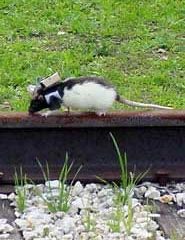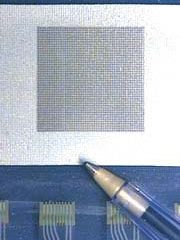
The key role of computer technology in the fine-tuning of drug development and design will be considered by Professor Stephen Muggleton of Imperial College, London in his inaugural lecture, Models of Mind and Models of Body, today.
The new Professor of Bioinformatics in the Department of Computing will focus on how machine learning and logic programming can reduce the high costs of drug development in the pharmaceutical industry.
The pharmaceutical industry is increasingly overwhelm

Jubilant astronomers today unveiled humankind`s most spectacular views of the Universe as captured by the NASA/ESA Hubble Space Telescope`s new Advanced Camera for Surveys (ACS). They also reported that Hubble is operating superbly since the March servicing mission and are looking forward to more pictures from the newly revived NICMOS camera.
“The ACS is opening a wide new window onto the Universe. These are among the best images of the distant Universe humans have ever seen,” says Johns Hop

Dark-matter detector could pin down the Universe’s missing mass.
Researchers in London are building a cheap dark-matter detector that should be able to spot the exotic particles called WIMPs that are suspected of hiding most of the Universe’s missing mass 1 .
A prototype of the detector has just shown, for the first time, that it can spot something as close to a WIMP as it’s possible to produce in the lab.
WIMP stands for ’weakly interacting massiv

Desire drives remote-controlled rodents.
Remote-controlled rats could soon be detecting earthquake survivors or leading bomb-disposal teams to buried land mines.
Signals from a laptop up to 500 metres away make the rats run, climb, jump and even cross brightly lit open spaces, contrary to their instincts. The rodents carry a backpack containing a radio receiver and a power source that transmits the signals into their brains through electrical probes the breadth of a hair.

Walls and curtains could sport liquid-crystal digital displays.
Homes of the future could change their wallpaper from cream to cornflower blue at the touch of a button, says Dirk Broer. His team has developed paint-on liquid crystal displays (LCDs) that offer the technology.
Liquid crystals are peculiar liquids: their molecules spontaneously line up, rather than being randomly orientated as in a normal liquid. Passing a voltage across the molecules switches their alignment, b

An article in the May issue of Journal of the Royal Society of Medicine suggests that much of the medical inspiration for Mary Shelley’s legendary novel Frankenstein came not from central Europe, but from a retired Scots physician living in Windsor. Christopher Goulding, a postgraduate student at the University of Newcastle upon Tyne, bases his claims on his PhD research into the scientific interests of the novelist’s husband, the poet Percy Shelley.
Most criticism of Mary Shelley’s much-in

Researchers from Delft University of Technology in The Netherlands have been able to initiate a controlled movement in the very heart of an atom. They caused the atomic nucleus to…

The integration of efficient, scalable, and cost-effective nanoscale lasers is essential for optical interconnects, medical diagnostics, and super-resolution imaging. Particularly, telecom-band NW lasers are promising for on-chip coherent light sources…

Smile for the camera! An interaction between an elliptical galaxy and a spiral galaxy, collectively known as Arp 107, seems to have given the spiral a happier outlook thanks to…

Research led by the Institute for Bioengineering of Catalonia (IBEC) has studied the migratory movement of groups of cells using light control. In processes such as embryonic development, wound healing…

Brigham researchers develop strategy to improve immunotherapy by helping T cells penetrate and kill tumor cells. Fighting cancer is exhausting for T cells. Hostile tumor microenvironments can drain their mitochondrial…

New method developed by researchers of KIT and voxalytic GmbH allows easy elucidation of the spatial arrangement of atoms –tool for drug discovery. The chirality of a molecule refers to…

The global use of lithium-ion batteries has doubled in just the past four years, generating alarming amounts of battery waste containing many hazardous substances. The need for effective recycling methods…

A new study led by researchers at the University of Minnesota Twin Cities is providing new insights into how next-generation electronics, including memory components in computers, breakdown or degrade over…

How synthesis methods have a profound impact on disordered materials. A new study reveals how different synthesis methods can profoundly impact the structure and function of high entropy oxides, a…

The AQT quantum computer, featuring 20 qubits based on trapped-ion technology, is now operational at LRZ’s Quantum Integration Centre (QIC), making it the first of its kind in a computing…

The CHAI joint project aims to optimize corrosion management in ports and waterways. The federal state of Schleswig-Holstein is funding the CHAI research project with a total of 900,000 euros….

A research team from the Scuola Superiore Sant’Anna in Pisa has developed the prosthesis of the future, the first in the world with magnetic control. It is a completely new…